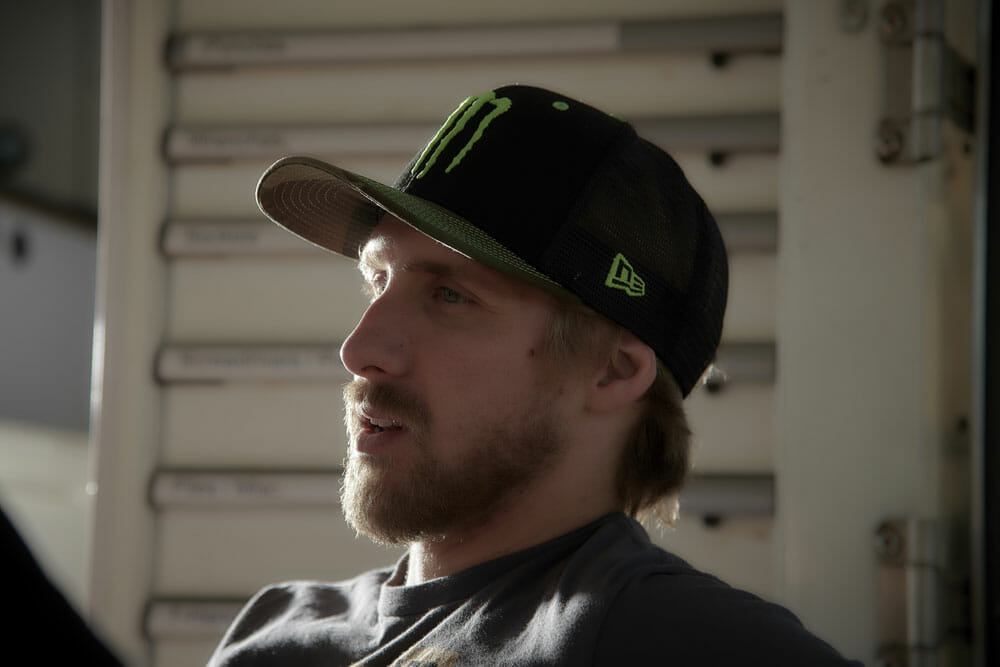| February 17, 2018
Comeback Kid
Monster Energy/Knich/Factory Yamaha’s Justin Barcia | INTERVIEW
Justin Barcia talks about changes in his life and his resurgence in this year’s supercross series.
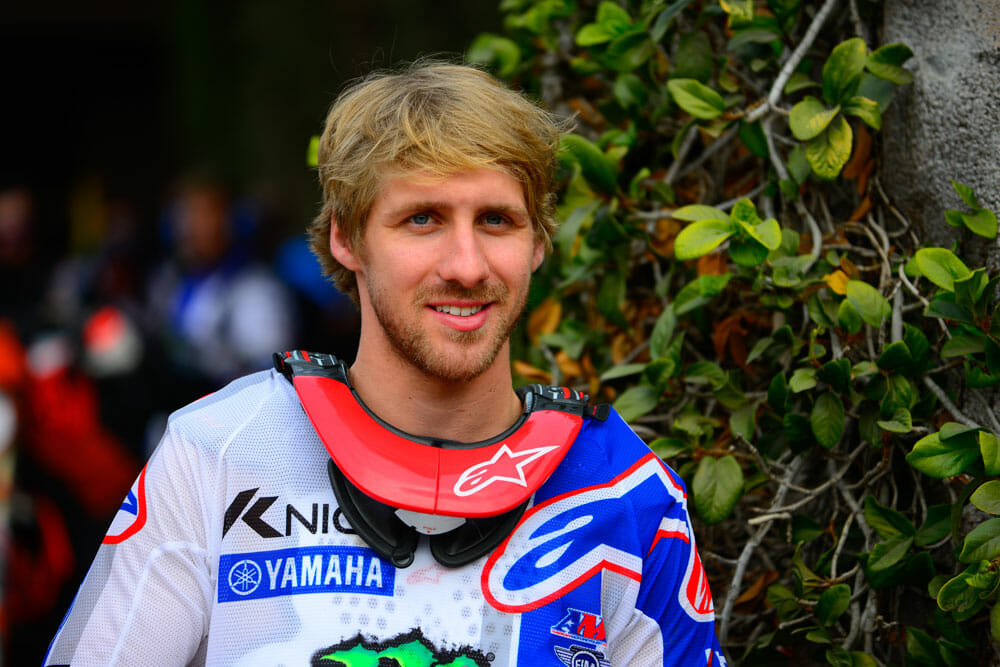 In just a few months, Justin Barcia has made a complete turnaround in his racing career.
In just a few months, Justin Barcia has made a complete turnaround in his racing career.
It really doesn’t seem all that long ago that Justin Barcia was one of the most highly sought after racer in motocross. Everyone team wanted him. And why not? He was insanely fast, wasn’t afraid to bang bars with the already established riders when he was a rookie, and had that flamboyant personality that teams—and fans—like. To this day, Barcia still has all these qualities but the difference is: no one wants him. At least up until a few weeks ago.
Since moving up to the 450cc class after winning two 250SX East Championships in 2011 and 2012, even he will tell that he has not lived up to expectations, which were super high especially after winning the Monster Energy Cup in his first race on a 450 in 2012 as a member of the Honda factory team. Since then, Barcia has had some success but not the kind everyone was expecting. You could blame some of that on injuries—he’s had more than his fair share, that is true—but, for some reason, he seemed to lack the fire of the early days of his professional career.
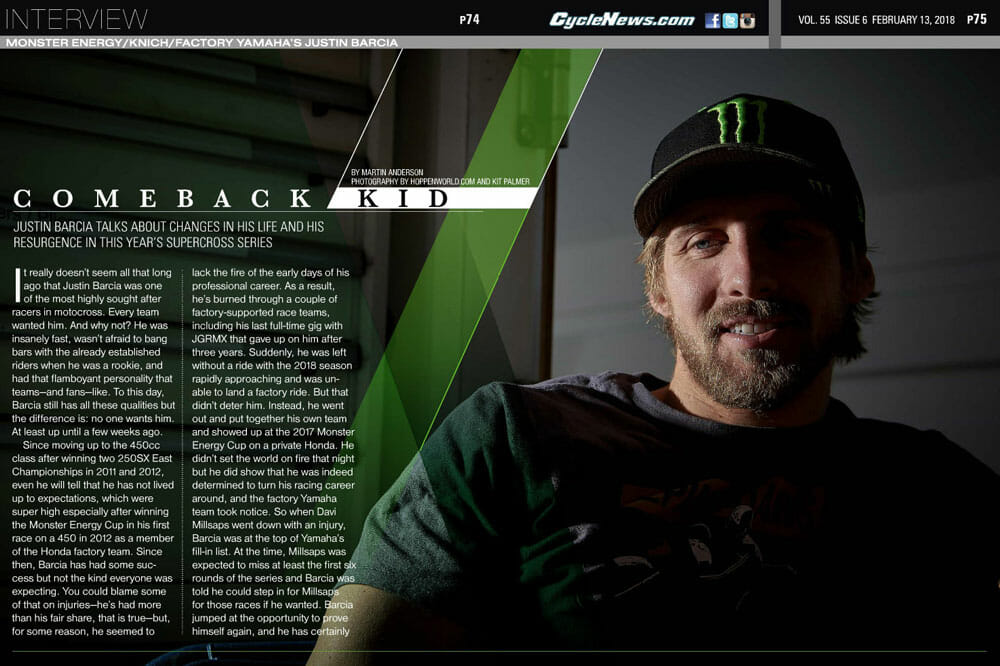
By Martin Anderson
PHOTOGRAPHY BY HOPPENWORLD.COM AND KIT PALMER
As a result, he’s burned through a couple of factory-supported race teams, including his last full-time gig with JGRMX that gave up on him after three years. Suddenly, he was left without a ride with the 2018 season rapidly approaching and was unable to land a factory ride. But that didn’t deter him. Instead, he went out and put together his own team and showed up at the 2017 Monster Energy Cup on a private Honda. He didn’t set the world on fire that night but he did show that he was indeed determined to turn his racing career around, and the factory Yamaha team did notice. So when Davi Millsaps went down with an injury, Barcia was at the top of Yamaha’s fill-in list.
At the time, Millsaps was expected to miss at least the first six rounds of the series and told Barcia that he could step in for Millsaps for those races if he wanted. Barcia jumped at the opportunity to prove himself again, and he has certainly done just that. He’s now the team’s top rider in the championship! After five rounds, he’s been on the podium three times and is third in the championship, 17 points behind the leader (as of the Oakland round).
By the time you read this, round six will have happened and you can bet the farm that no matter how Barcia places in San Diego, he’s not going anywhere when or if Millsaps returns to the Monster Energy/Knich/Factory Yamaha Team. When asked if they would keep Barcia after the six races, a Yamaha team member recently told Cycle News that their number-one priority is to win the championship. Right now, Barcia is their only hope.
We caught up to Barcia at the Oakland Supercross and chatted about his new lease on life.
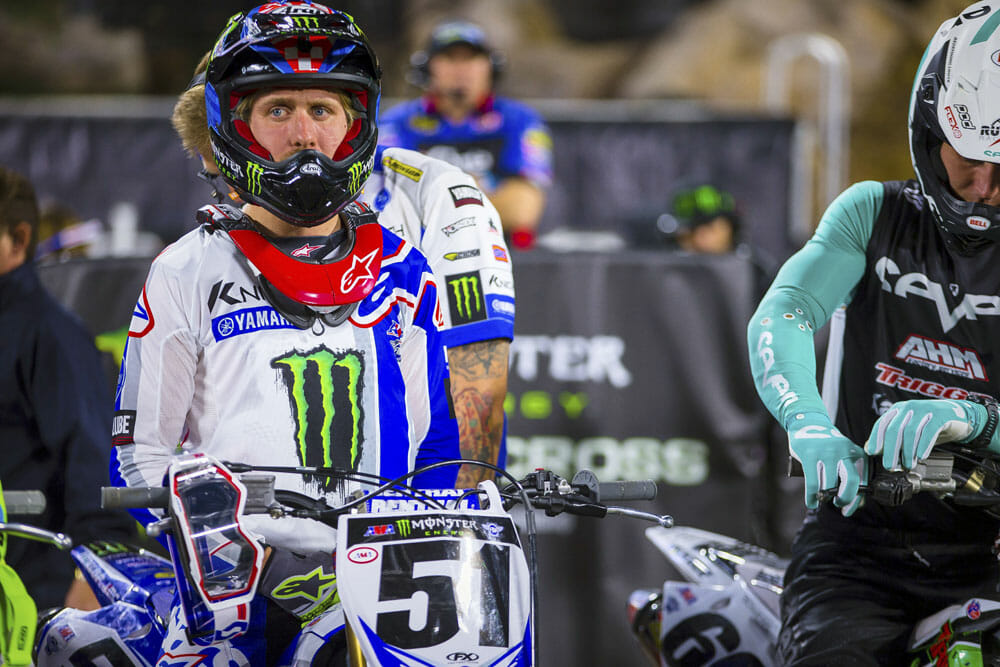
You are one of the biggest surprises in supercross so far this season. What’s changed?
Everything [laughs]. Yeah, I kind of like it being a surprise, because I didn’t have any pressure coming in. I could’ve done really bad or really good, and I actually did really good. I got the opportunity to fill in for Yamaha for six races and it’s been fantastic. I now live in California [so I could] test with the team and stuff like that. And, I have a fiancée right now, which is really nice in my life. Yeah, everything is going good.
Many riders live and train in Florida now but you chose to move to California for a while.
It was important with the new Yamaha to come out to test it and get used to the team and everyone, and to be compatible on this hard-packed dirt that we have been racing on and stuff. [But] I’m planning going back to Florida in the next couple of weeks [when the series] moves to the east coast. I mean, I still live in Florida. I just stay out here for the beginning of the season.
Do you have a trainer or training partner?
I have a few people that help me. Nothing specific really, but I pretty much have people help me put my plan together and stuff like that. But for the most part, I do it—my riding stuff like that—on my own. When I’m [in Florida] I visit once in a while the Millsaps Training Facility to ride with some of the kids and hang out with them. And they come to my house to ride, too. So, yeah, there are a lot of good people that help me.
Did you expect to be at the front of the supercross championship like you are now?
I definitely want to be back in front, that was my goal for sure. Before the season, testing went well and I was comfortable on the bike, but you just never know how good you’re going to be at the races. For me, I put in the hard work and got my bike really comfortable.
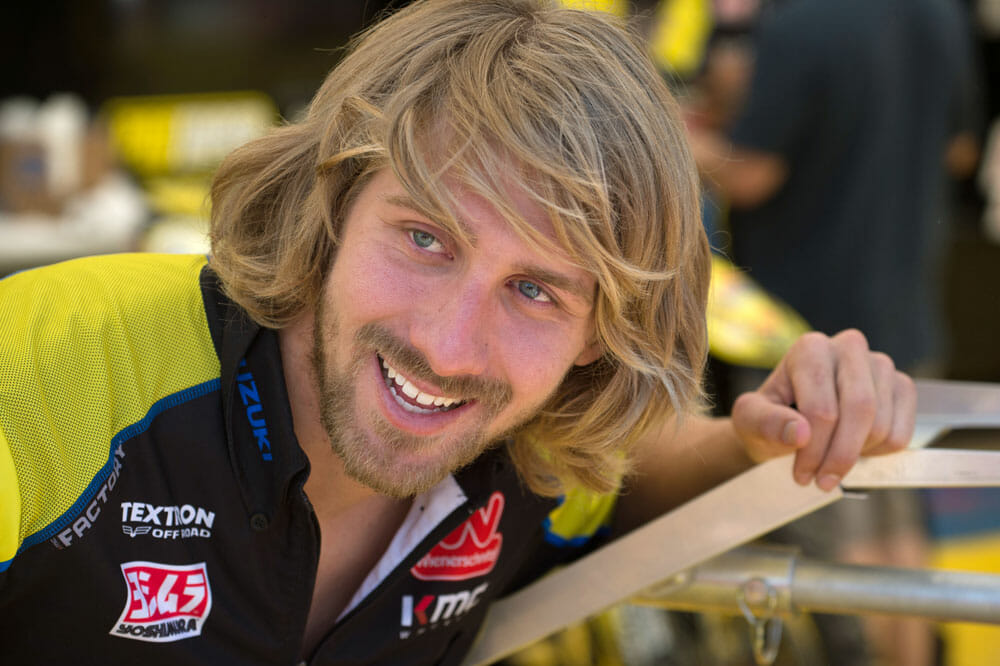 Barcia said he never felt completely comfortable at his former team.
Barcia said he never felt completely comfortable at his former team.
You said that you over trained in the past. Can you explain that?
Yeah, I have tried a lot of different trainers over the years and a lot of people. Obviously, they have different thinking, and I think just some people trained me too hard, and I got burned out in the season. That was a bad thing because you are just tired all the time. This year, I definitely took everything I’ve learned—the good years, the bad years, and all that—and I just got to put it together and built a great program.
During your time with JGR you said that the Yamaha was not a good fit for you. What has changed since then?
Yeah, for sure. I was at JGR a couple of years and I was just—with all the injuries I had and with the bike setup and stuff like that—I was never able to dial it in to my liking. It wasn’t like it really had anything to do with anyone, it was just I wasn’t comfortable. I was never really comfortable there. I was comfortable at a couple of outdoor races, but in supercross, I could just never get it all right, and before the season, I had some bike issues and got hurt, and I just never [was] able to get my confidence back while I was there.
What’s most important for you on your bike? Suspension, engine or something else?
I think the most important thing on the bike is the suspension. You want to go good in the whoops and you want it to turn well. You want it to work good everywhere, really, but the biggest thing is always making the suspension the best you can have.

After the last season you were left without a ride and you had to go out on your own. How hard was that after having been on factory-backed teams for your entire professional career. Suddenly you had to do everything yourself. How did you adjust?
You know, I was happier doing it on my own than being on the factory team I was on, honestly. I just wasn’t really uncomfortable and didn’t believe in myself anymore and didn’t believe in the bikes. I took a break, and I went out to get some bikes and build them up. We raced for a weekend [Monster Energy Cup] and I just hat a lot of fun. But it was very hard, it was challenging, and I obviously thought I deserved a factory ride right away. Big surprise finding out I was wrong. A big surprise coming to others soon, too, who think they deserve anything. But it’s better that I had to deal with this this way, because I had to prove to myself and show people that I still have the speed and stuff.
Was not having a factory ride kind of an eye-opening experience for you?
No, I wouldn’t say it was. I mean, I was just in a rough place in racing in general. I was just struggling really bad and, after the season, I kind of took a break, and I wasn’t sure if I could come back and race again, or if I was going to retire from racing and do something else. But I wanted to race some more. Thus, I did the whole privateer thing. I mean, it wasn’t so much of an eye opener. It was just more like a fresh start. I let the crap go out the window, all the bad, negative things I had around me, and I just had fun again. It was eye opening in different ways [but] it wasn’t really eye opening that I didn’t have a factory ride. It was just like a clean slate to start new. I pretty much went all the way down to the bottom, [and] I’m just building my way back up.
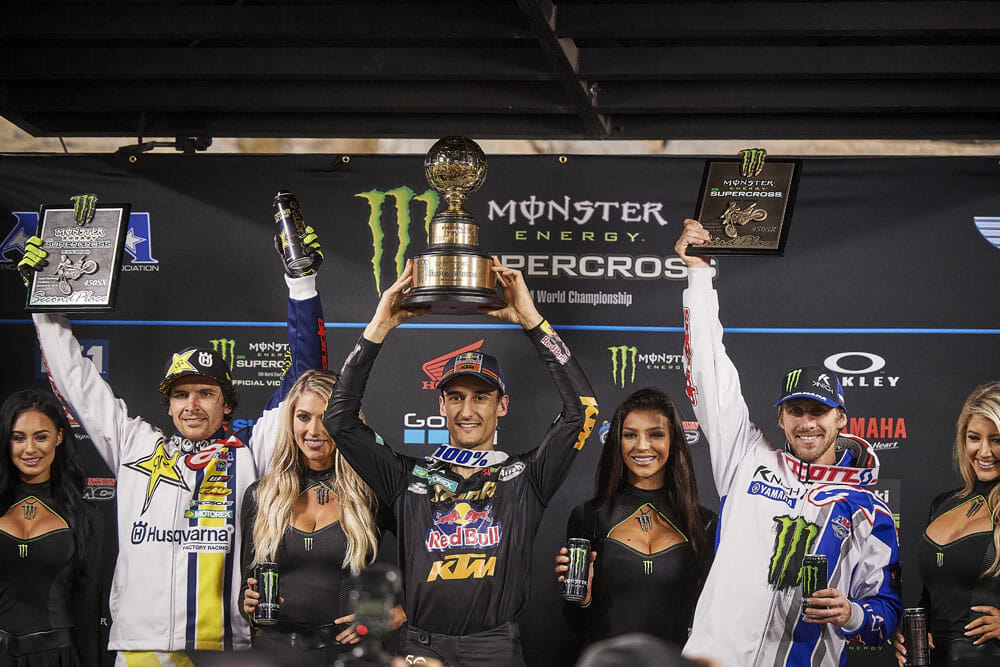 Barcia surprised many by making the podium at the opening round of the 2018 Monster Energy AMA Supercross Series.
Barcia surprised many by making the podium at the opening round of the 2018 Monster Energy AMA Supercross Series.
What about your relationship with your longtime sponsors Alpinestars and Arai?
I have a super-good relationship with Alpinestars. They have been my number-one sponsor and, of course, Arai is on the same level, and Scott has been with me for a couple of years now, as well. So it’s been a nice time with those relationships, and for those companies to stick behind me and still believe in me in the good and in the bad days—they have been behind me.
In Europe, there have been a lot of rumors that you might ride MXGP. Did you have any offers from teams over there?
I talked to a lot of teams, but they were not fitting well, and it just wouldn’t work for me. I felt like I can do my privateer [program] in America better than try go over to Europe and learn everything and maybe struggle with setup and getting used to your bike or something. So nothing really worked out unfortunately. I had an effort in the past to go race for Everts’ [Suzuki] team and stuff like that but I was always in contracts in American stuff and let it go.
Here are the big questions: What’s the plan with Yamaha now? What happens if Millsaps comes back?
We’re all going racing the whole season! [laughing]. Yeah, I think it’s okay. I’m working on staying with Yamaha, and it’s been fantastic. We all get along really well and the new bike is awesome. I hope it still works out well for us all. Yamaha is a very big company and I think we all can go racing. I think everyone at Yamaha is happy and I never really got to work with the factory team much when I was at JGR [when JGR ran Yamaha equipment]. So, it’s like a fresh start. It’s been a lot of fun.
What do you think about the current state in American motocross and supercross? A lot of good riders are having a hard time finding jobs right now. Has it always been that way?
I’m not sure. In supercross and motocross, it is a lot tougher [getting] rides. There are a lot of riders and not a ton of rides. But the stadiums fill up on the weekends with the fans, but it seems like there is less money for teams and stuff. So it’s weird. I don’t know much about it, but I know there are too many riders and not enough rides for all this. It’s really tough to keep a good solid factory ride.
On a personal note, you got engaged last year. She lives in England, right?
Yes, that is right.
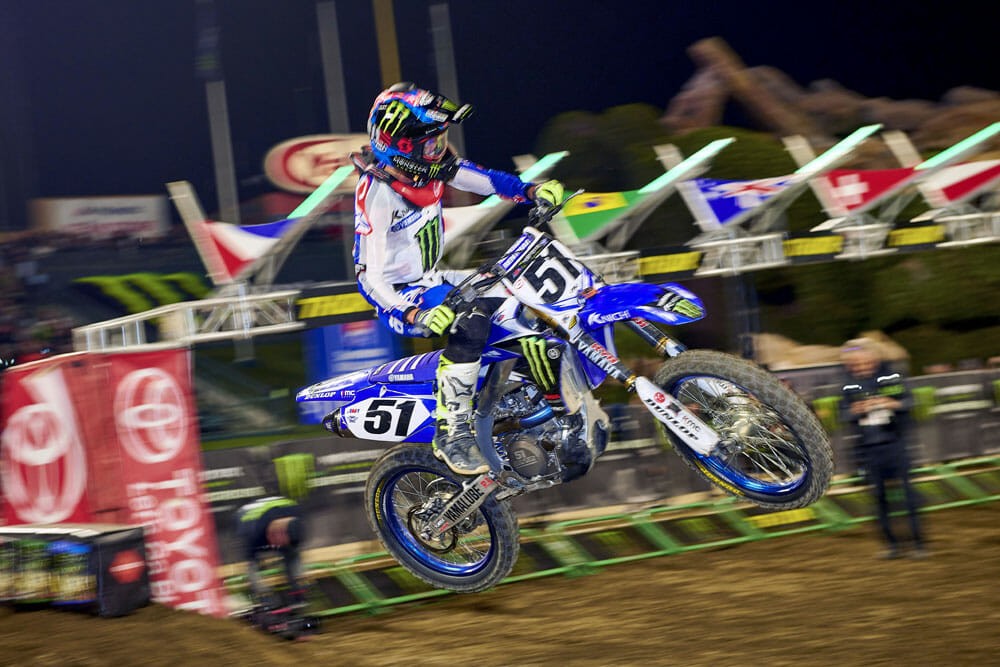
How do you manage such a long-distance relationship?
Yeah, that’s very hard, but I met Amber when I was in a tough time in my career and since she came into my life, she’s been a super-positive thing and just a great person to be around. [She] brings me back to myself again. It’s a little challenging because she is over in England and I’m here racing. But we both stay really busy, we talk on the phone every day and just make the best of it right now with the circumstances. But, hopefully, by the end of the year she’ll be over here with me full time. We get married in November and it will be great [laughs].
How did the two of you meet?
We met in Geneva, at the supercross, actually. It is funny because we had mutual friends there. After the race we actually bumped into each other in the elevator at the hotel and it was just kind of coincidence a little bit. We just hit it off.
Did Amber change your mentally and focus on racing? If so, how did she do that?
Yeah, for sure. She has a Master’s in psychology and forensic criminology, which I’m sure helps a little because she figured me out a bit. I was probably the ultimate crazy patient for her to work with. As I said, I was in a really bad place in my career. I didn’t win for a while and was struggling with racing and just life in general and just nothing was going that good. And she just came into my life and showed me that there are more important things than I thought were so important. [She made me realize] that my things I was so worried about are not that big of a deal. I just made them such a big deal. I kind of had take a step back and see it clear. Yes, she brought a lot of love and positivity into my life.
Back to racing, when it comes to racetracks, do you like tracks that are more difficult or more technical?
I prefer the tracks being more technical because the top guys rise in the harder conditions, and the people who maybe aren’t as good of a rider, they can’t do that stuff for 20 laps. It makes it more interesting and separates the guys a little.
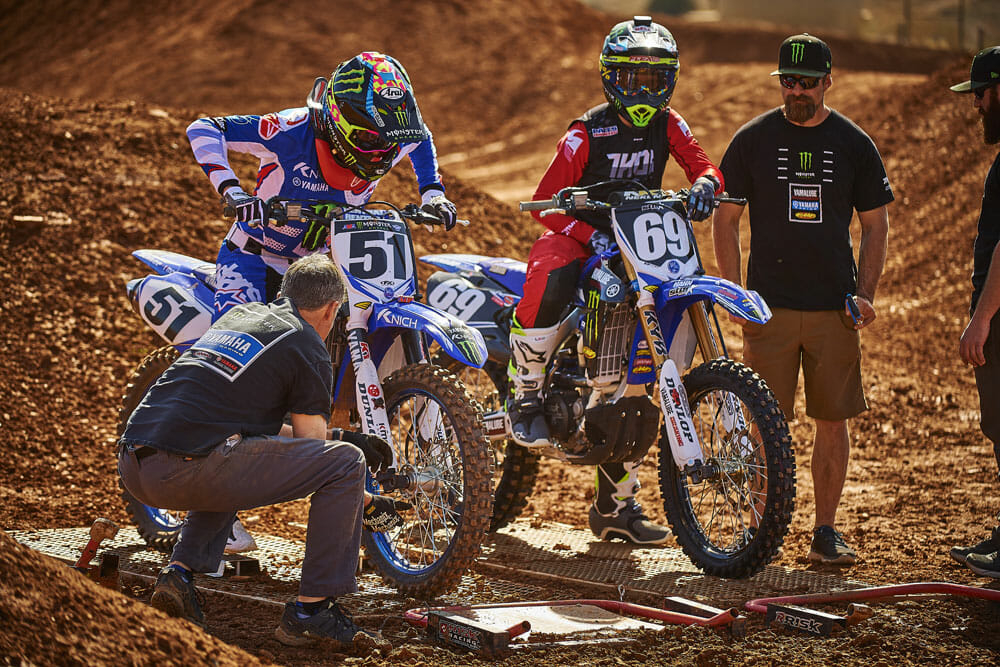 Barcia has been living in California working hard training and testing with the factory Yamaha crew.
Barcia has been living in California working hard training and testing with the factory Yamaha crew.
What do you think about the new metal starting grids?
I think the new metal starting gates are really good actually. We get a consistent start every weekend. The hardest part is just when you transition from the metal to the dirt because you got to know if the dirt is hard-packed traction or not. That’s just looking at the dirt and figuring it out. But all in all, the metal grid is really awesome.
You’ve had good starts this season.
I got good starts and bad starts. At A2, I had really bad starts and it was my worst finish. I was in like eighth place or something. But for the most part I’ve had really good starts, but I haven’t really holeshotted, maybe one of them, and I mean Kenny [Roczen] battled [for the holeshot] a little bit, but I think if I can get a holeshot at one of these weekends, I really can fight for the win for sure.
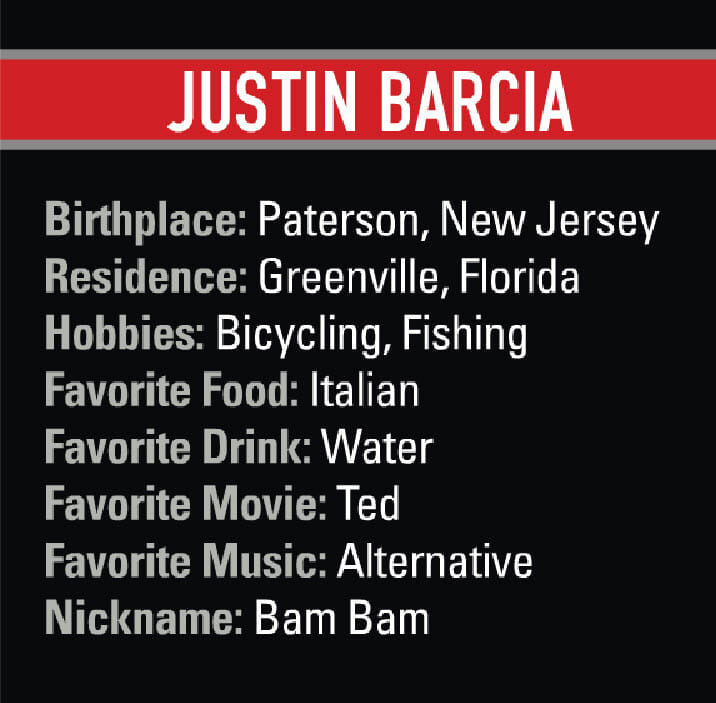 What do you think about the Triple Crown format?
What do you think about the Triple Crown format?
The Triple Crown format is interesting. They try to bring a new aspect into the sport and make it more exciting, but I don’t think any racer loves it. We’re used to doing the normal thing and racing one main event. But I think, all in all, they need to explain it a little better for the fans, because, like at the end of the night, the fans don’t really know actually who won the whole race. So it’s a little bit too confusing I think. But it does switch it up a little and keeps it interesting, which is good, but I just think they need work out a few kicks and it will be a lot better.
Have you changed your riding style over the years?
I think I have not necessarily so much over the years; at least I think I’ve gotten a little smarter the last few years. This year, I think it is showing that I’m a little bit smoother and a different rider. I still like kind of hanging on the edge. I’m pretty aggressive and I have that style that fans like, but I definitely try to be more consistent, not so up and down.
Do you have your own track in Florida?
Yeah, I have a big training facility in Florida. I have a big motocross track and two supercross tracks.
What is your normal training regiment?
I like to do a lot of different things when it comes to training. I like to ride my bicycle. I like to run and obviously do things in the gym. Every now and then I do yoga, it’s good for stretching and stuff like that. I definitely switch it up and do a lot of different training.
When it comes to the sport of supercross and motocross, is there anything you’d like to see change?
I think the sport is in a good place right now. I do think there’re too many races. Supercross is fine but too many outdoor races; we only get a weekend between the two to get ready for outdoors. Hopefully they somehow combine the two series or something and maybe give us a little break and not so many races, because we like to go to Europe, too, and do some races there. See, if you’re healthy all year, you’re racing almost non-stop. But I think the supercross schedule is good, and I think they should stick to a normal format and outdoors maybe not so many races.
How do you and your new teammates at Yamaha get along?
Teammates are good. I don’t have any issues with my teammates. We [he and Cooper Webb] actually crashed into each other at Anaheim II, and he got a little mad at me, but all in all it’s okay.
What about you and Ken Roczen?
Oh gosh! He’s okay. We’ve got history but it’s all right. I don’t really have any beef with anyone anymore too much. I kind of tried letting that all go and make it up with everyone [laughs]. CN
